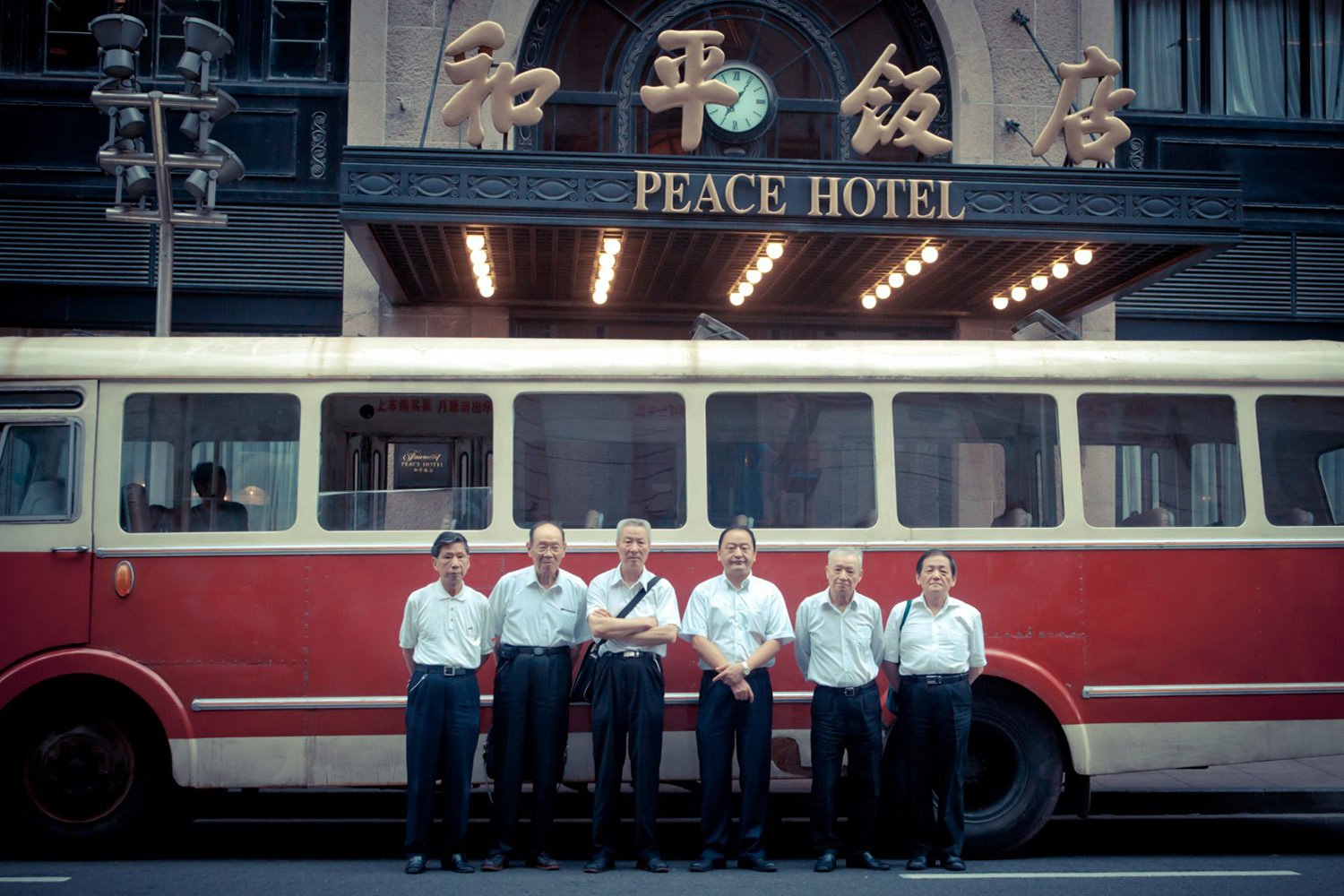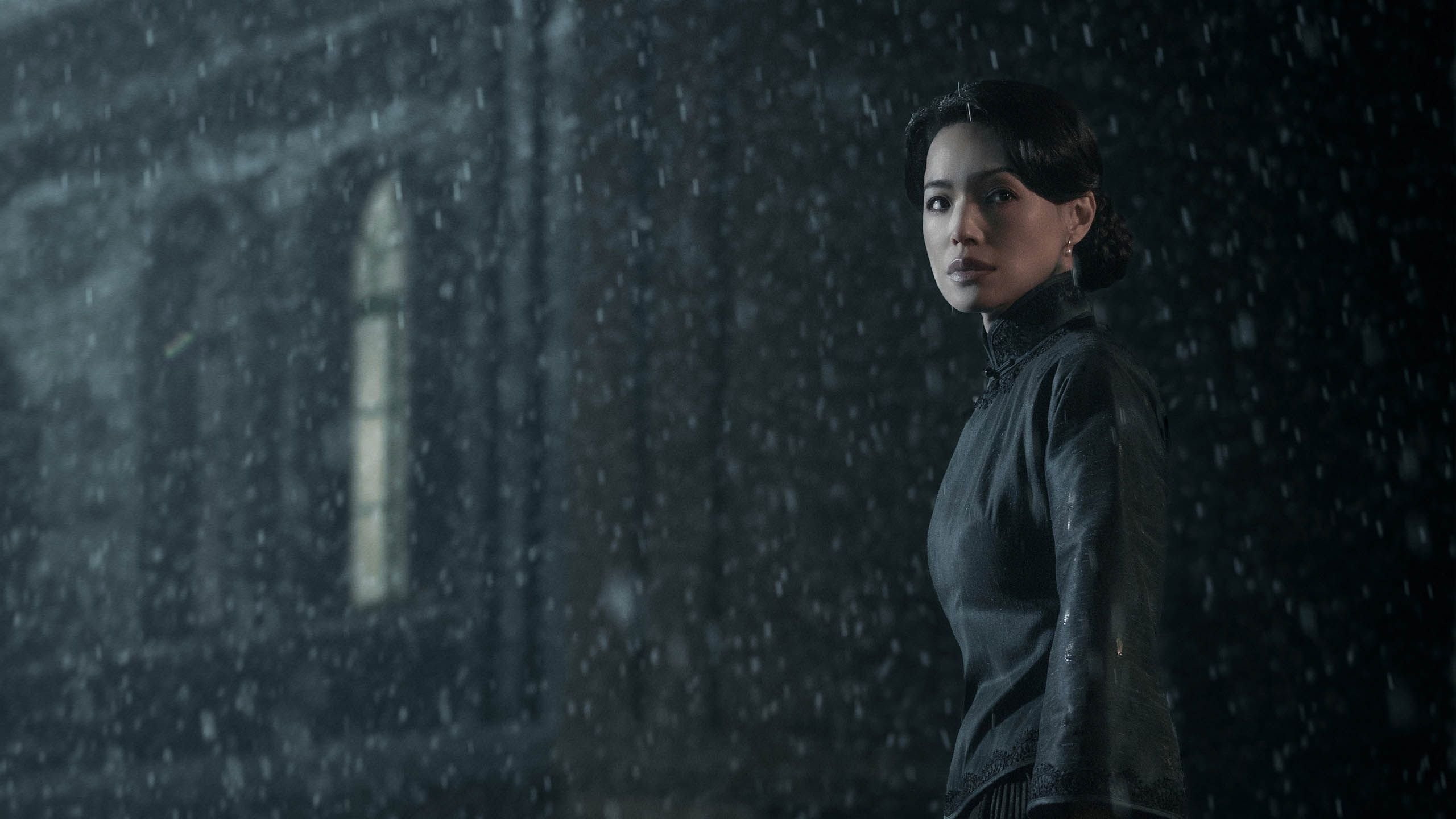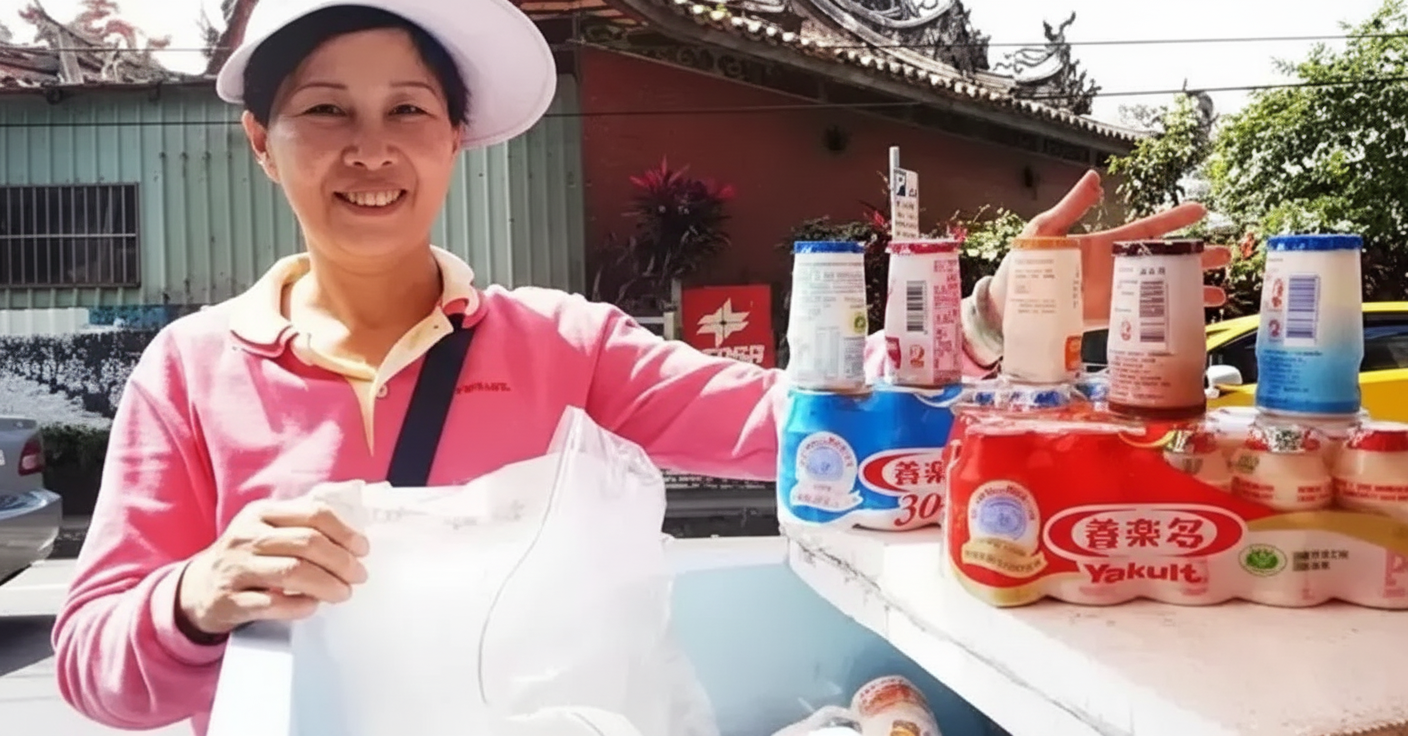Editor’s note: This article was originally published in Chinese by Nowness, and has been translated and re-posted here with permission.
“My goal is not just to become a hip hop singer,” says Shanghai-based artist YEHAIYAHAN. Despite the fact that she’s best known to her legion of fans around China as ChaCha — a stage name that she built up over many releases of passionate, soulful vocals and many long nights at long-gone Shanghai clubs like LOgO and The Shelter — she has jettisoned that moniker in order to make room for a new phase of her career. YEHAIYAHAN is her given name, and on her forthcoming debut album under this name she plans to return to her roots in more ways than one, drawing inspiration from the rural Guizhou mountainside where she grew up.
 10 Years of Sound from Shanghai’s YEHAIYAHAN, aka ChaCha (Exclusive Mix)The stalwart Shanghai singer & producer takes us on a cinematic, 2-hour trek through her sonic memory ahead of her May 3 LA debut at RADII’s china.wav showcaseArticle Apr 24, 2019
10 Years of Sound from Shanghai’s YEHAIYAHAN, aka ChaCha (Exclusive Mix)The stalwart Shanghai singer & producer takes us on a cinematic, 2-hour trek through her sonic memory ahead of her May 3 LA debut at RADII’s china.wav showcaseArticle Apr 24, 2019
“If I want to stand on a bigger world stage, and let more people hear and understand my voice, I need to firmly know who I am, where I’m from, what experiences have shaped me,” she says about her artistic rebirth as YEHAIYAHAN. Though the full album won’t come until August, it has already received a stunning music video for its debut single, “Under the Moonlight.” The video was shot on 16mm film in the remote Yi village of Ni Le Jue in rural Sichuan, and it elegantly blends YEHAIYAHAN’s dreamy, soulful vocal delivery with the cultural sights and sounds that the artist herself has channeled through her latest productions.
The video was directed by Jia Shijun of Shanghai’s Touching Studios, an old friend who featured ChaCha on his underground music scene documentary called LOOPER in 2016. Currently, the “Under the Moonlight” video is gaining traction overseas, traveling to several high-profile festivals and earning well-deserved praise for its rich palette of colors, tones, and moods. I sat down with YEHAIYAHAN and Jia to learn more about the music, the video, and the distinctive Yi culture that permeates both.
RADII: You recently decided to change your artist name from ChaCha, a stage name, to YEHAIYAHAN, your given name, and more and more you seem to be embracing the sounds and visual aesthetics of the ethnically diverse area that you came from in rural Guizhou. Can you talk about this creative decision? How has embracing the name “YEHAIYAHAN” changed your music and your approach to making art?
YEHAIYAHAN: My real music career started in underground clubs. As a club MC, I worked with many producers and musicians, and tried different kinds of music styles, practicing live singing and freestyle skills. Through my performances in underground clubs and live houses, more and more people started to know me. After collaborating with many club and hip hop musicians, I was positioned as an underground singer or hip hop vocalist.
I’m very grateful for that time, it taught me a lot and I met many musicians who’ve had a great influence on me. During that process, I gradually matured and found my own direction. I know that my goal is not just to be known as an “underground singer” or “hip hop singer.” I know that I have a broader and deeper passion for music, and I’m also looking forward to performing on a bigger stage. If I want to stand on a bigger world stage, and let more people hear and understand my voice, I need to firmly know who I am, where I’m from, what experiences have shaped me.
https://www.instagram.com/p/BwwxLXSFmcB/
So I decided to return to my real name, go back to where I started, learn to let go of the shackles that labels bring to me, try to open my mind and learn something new, move beyond the areas where I already have skill in order to experience new challenges. Through this process, I will explore my own roots and culture, and rediscover myself to find more powerful motivations. This is just the beginning.
If I want to stand on a bigger world stage, and let more people hear and understand my voice, I need to firmly know who I am, where I’m from, what experiences have shaped me
This track, “Under the Moonlight,” prominently features a vocal sample of an Yi minority singer. When and where did you record this sample? Why did you decide to incorporate it into your music?
YEHAIYAHAN: Chengdu has a very good local music festival called Chunyou, which is held annually and recently held its seventh edition. The organizers, staff, and musicians involved are all very good friend of mine. They’ve been working hard to create a harmonious, free and independent local music environment. I participated in the festival for the first time last year, and they invited children from the Daliang Mountain Yi community to participate. On one hand, these minority children got an opportunity to reach a larger world. On the other hand, they are actively fighting to fund their lives and education. These children were standing on the stage wearing traditional costumes, singing their songs without accompaniment. It was a bright Spring afternoon, people were enjoying music, sunshine, food, and time with friends.
When the children’s song started, we seemed to go with them to the valley, and it fell quiet. Everyone was immersed in their songs, clear and pure… the world seemed to be composed of only the nature surrounding us, all the noise and jealousy faded away. It stirred up a deep feeling in my heart.
I’ve always had the habit of collecting sound material, but I didn’t bring my recording device with me that day. These voices were so beautiful, I just wanted to record it, so I took out my phone and recorded the songs with the voice recording function. Last Spring, when I was working on the YEHAIYAHAN album, I was on tour in Madagascar. On the beach one night, I listened to the waves and felt that I had the opportunity to go out of the mountains. At that time I was looking at the moon in the sky on the other end of the earth, it was like a dream. The sound of the waves was very soft, it felt like wind blowing through the treetops of the mountains.
Related:
 B-Side China Podcast: City to Country with ChaCha and Kayla BriëtArticle Sep 01, 2018
B-Side China Podcast: City to Country with ChaCha and Kayla BriëtArticle Sep 01, 2018
I thought of those kids at that moment. Then I wrote this song by the sea, recording the sound of the waves. After returning to Shanghai, I also sampled the voices of these little girls [from the Chunyou festival]. Because it is directly recorded by the phone, it’s also mixed with soft conversation and the surrounding environment of the festival that afternoon. This natural feeling makes this song a more powerful force.
Last year you participated in an artist residency called Found Sound China and traveled around Southwest China doing field recordings with Kayla Briët, a US artist with Native American and Asian heritage. Can you describe what you and Kayla experienced during that time, and how it has come to influence your solo project?
YEHAIYAHAN: Kayla’s father is Native American, and she’s been fascinated by the power of this indigenous culture since she was very young. These things have become part of her, and have strongly influenced her perception of the world, of the environment and the people around us. As she grew up, she also witnessed this culture struggling with and retreating from the threat of modern civilization.
She is also influenced by Eastern culture, and wants to explore her roots, and try to understand this contrast. I was deeply attracted to her story. I took her to a Dong village in the mountainous area of Guizhou, near my hometown [Zunyi]. We went past the places tourists go, to the hinterlands and the lives of the local people. I wanted to take her to see the culture and life of the mountain tribes that have had a profound impact on me. I also wanted to learn more about my roots through these visits.
These tribal cultures in China are dissipating and gradually losing their heritage. Except for a few elders who can remember the historical stories of their tribes, these cultures have a serious gap with the culture and lifestyle of young people. But what shocked us was that, even with our two different cultural backgrounds at two different ends of the earth, Native Americans and Dong people in the Guizhou mountains share similar philosophies about the symbiosis between humans and nature. We looked at each other so many times with hands clasped together, feeling as if an electric current was passing through our bodies, unable to stop the tears of excitement. This experience had a profound impact on me.
I hope to be a bridge, making tiny connections between these differences, and expanding these connections through the international language of music
It made me more certain that there is a close and inseparable connection between people and culture. These connections don’t only belong to certain tribes and traditions, or specific ancient or modern civilizations, or even certain languages or nationalities, but to the development of human beings, human history and culture. This also made me understand what the roots and significance of my creative projects are. I hope to be a bridge, making tiny connections between these differences, and expanding these connections through the international language of music.
Your forthcoming YEHAIYAHAN album, also called Under the Moonlight, is your first self-produced album. What is your plan to distribute it? When will it be released?
YEHAIYAHAN: I personally took control of the songwriting, production, and arrangement of the album, and it was mixed and mastered by my good friend Shen Lijia from Beijing label Ran Music. There is also a song on the album that I arranged with my old friend, Soulspeak [aka Kai-Luen]. The process was more difficult than I imagined, but also a lot of fun. I learned a lot, and challenged myself.
The album was originally supposed to be self-released between March and May this year, but in May I met Daddy Kev of Alpha Pup Records at RADII’s china.wav event in Los Angeles, and we decided to co-publish the album in August. In addition to the digital part, the album is part of a collaboration with Nini Sum, the head of IdleBeats, a Shanghai screen-printing studio. She also created the awesome cover for this album. We’ve handmade 300 prints — the screen-print of the album cover will be made into a gift box with the download code inside, and will be released at the same time time as the digital album in August.
Jia Shijun — the majority of videos that your studio, Touching Studio, has produced are narratives of urban Chinese youth made for brands like Durex, Lenovo, Nike, etc. What made you choose YEHAIYAHAN as a collaborator, and the Yi people of rural Sichuan as your subjects for this video, which is a rare departure from your typical mode of branded content?
Jia Shijun: Touching Studio has always had a keen interest in music. Basically, every member is a heavy music lover, and has a unique understanding of different kinds of music. Therefore, we give priority to music-themed works. The collaboration with YEHAIYAHAN goes back to my personal short documentary, LOOPER, in 2016. This documentary captures some scenes of the Shanghai independent music community, and YEHAIYAHAN is one of several featured musicians.
Treating the Yi people — or Chinese minorities in general — as a subject has also always been a goal of Touching Studio. We’ve traveled to Inner Mongolia, Xinjiang, Yunnan and other regions with scholars and friends from the Shanghai Conservatory of Music to do field research on minority music and anthropology. In the process, we were attracted by [these people’s] original culture and music. What is reflected in them is perhaps what the Han people lost in the process of a long, historical evolution. In the future, we will continue to cover ethnic minority regions.
You made a few decisions that made the production of this video more time and labor intensive, such as choosing to shoot in the remote, landlocked Ni Le Jue village as opposed to more accessible locations that you’d scouted near Chengdu, and choosing to shoot on 16mm film rather than digital. What led you to these choices, and how did they affect the final product?
Jia Shijun: Before the field research, the entire team was somewhat confused and uncertain about shooting at Ni Le Jue village. After all, there are several problem in front of us: the time and the efficiency of local communication there. However, after a week of exploration, I have made many choices over and over again, but we insisted on shooting in the mountains as the final choice. We did not hesitate. This also gives me more confidence.
Ni Le Jue village is a place with a unique culture. The local people living there are also very characteristic. Everything is very old. There are almost no modern things, like living in another world. This mystery is very attractive to me. The use of digital to shoot is more urbanized. The super 16mm is more original and more organic way to present the texture of Ni Le Jue village, and it is also a very classic way, so I insisted on taking the whole film with super 16mm.
In the last few years there have been several music and video projects deriving inspiration from the sights and sounds of the Chinese countryside, and specifically ethnic minority folk music and fashion. In 2018/2019, for example, two other Shanghai musicians that you’ve worked with — Gooooose and 33EMYBW of the band Duck Fight Goose — took field recordings of Dong people in Guizhou and reimagined them as contemporary electronic compositions for their DONG project. Why do you think rustic cultural traditions from rural China hold such an attraction for artists and viewers/listeners in big cities? What about socioeconomic, cultural, or artistic life in Ni Le Jue village do you hope to communicate with “Under the Moonlight”?
Jia Shijun: To mention politics or the economy may be a bit too serious. In fact, it is mainly because the song itself was very attractive to me when I first heard it, and the choral element of the Yi children inspired many creative ideas. We also did some research on the Yi people’s lifestyle and traditional culture, and then took some reference points from their own historical documents and combined them in the video, in line with the feeling of the song itself.
—
Cover image: Under the Moonlight album cover by Nini Sum of IdleBeats
You might also like:
 Yin: Reimagined Guizhou Choirs from 33EMYBWNew label Merrie Records launches with an EP for Shanghai producer 33EMYBWArticle May 03, 2019
Yin: Reimagined Guizhou Choirs from 33EMYBWNew label Merrie Records launches with an EP for Shanghai producer 33EMYBWArticle May 03, 2019
 Yin: Mongolian Folk Metal from Hohhot/Beijing Band Nine TreasuresNine Treasures incorporates Mongolian morin khuur and Chinese guzheng in their hard-hitting, Buddhist-themed new video “Bodhicitta”Article Mar 01, 2019
Yin: Mongolian Folk Metal from Hohhot/Beijing Band Nine TreasuresNine Treasures incorporates Mongolian morin khuur and Chinese guzheng in their hard-hitting, Buddhist-themed new video “Bodhicitta”Article Mar 01, 2019
 A Decade of Sound from Jeff Kai-Luen Liang, aka Soulspeak (Exclusive Mix)The formerly Beijing-based beatsmith also known as Soulspeak digs in to his archives for some choice cuts from his studio ca. 2010-2019Article Apr 10, 2019
A Decade of Sound from Jeff Kai-Luen Liang, aka Soulspeak (Exclusive Mix)The formerly Beijing-based beatsmith also known as Soulspeak digs in to his archives for some choice cuts from his studio ca. 2010-2019Article Apr 10, 2019
















